#Places To Visit in Meghalaya
Text
Exploring Meghalaya: Top tourist places to visit in meghalaya
Nestled in the northeastern part of India, Meghalaya, often known as the "Abode of Clouds," is a captivating destination filled with lush landscapes, breathtaking waterfalls, mystical caves, and unique culture. If you're planning a trip to this enchanting state, here are some Must-visit places in meghalaya that will make your journey truly unforgettable. Also with the best Meghalaya Tour Packages, you will find yourself immersed in a place where nature’s beauty flourishes in full glory while discovering the best places to visit in Meghalaya.

1. Cherrapunji: The Land of Endless Rain
Cherrapunji, famously known as one of the wettest places on Earth, is a must-visit destination in Meghalaya. This high-altitude town offers a stunning array of natural wonders, from majestic waterfalls like Nohkalikai and Seven Sisters to the unique living root bridges, crafted by the Khasi people using the roots of ancient trees. Don't miss the Mawsmai Cave, where you can explore a labyrinth of stalactites and stalagmites.

2. Shillong: The Scotland of the East
Shillong, the capital city of Meghalaya, has a charm that combines colonial architecture with natural beauty. The city's cool climate and vibrant music scene make it a popular destination for both locals and tourists. Visit Ward's Lake for a leisurely stroll, enjoy panoramic views from Shillong Peak, and explore Don Bosco Museum to learn about the region's diverse cultures.

3. Mawlynnong: Asia's Cleanest Village
Mawlynnong, often called "God's Own Garden," has earned the title of Asia's cleanest village. This picturesque village is renowned for its cleanliness and commitment to sustainability. Walk through its pristine streets, visit the iconic Living Root Bridge, and climb the bamboo Sky View tower for breathtaking views of the surrounding landscape.

4. Dawki: The Crystal-Clear River
Dawki, located near the Indo-Bangladesh border, is famous for its crystal-clear waters. The Umngot River, with its transparent blue-green hue, is a sight to behold. Take a boat ride along the river, and you'll be mesmerized by the underwater views and the surrounding lush greenery. The nearby Dawki Bridge is also a significant border crossing between India and Bangladesh.

5. Nongriat: Home of the Double-Decker Living Root Bridge
Nongriat, a small village near Cherrapunji, is home to the famous Double-Decker Living Root Bridge, a marvel of bioengineering. To reach this incredible structure, you'll need to trek through dense forests, cross hanging bridges, and descend steep steps, but the reward is worth it. The bridge, created from living tree roots, is a testament to the ingenuity of the Khasi people.

Final Thoughts
Meghalaya is a destination that caters to a variety of interests, whether you're a nature lover, adventure enthusiast, or culture seeker. From the cascading waterfalls and living root bridges to the vibrant traditions and warm hospitality, this state has something for everyone. So pack your bags and get ready to explore the enchanting wonders of Meghalaya!
0 notes
Text
Mesmerised by Nature’s Green Grandeur in Majestic Meghalaya
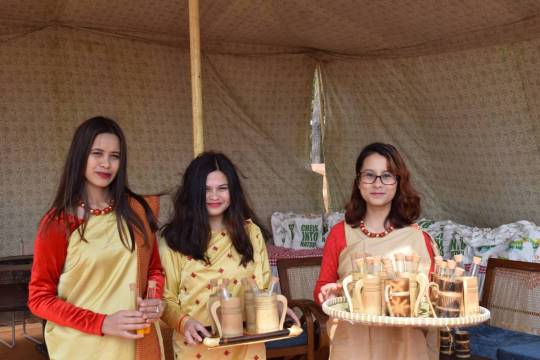
View On WordPress
#about meghalaya#beautiful destinations#culture of Meghalaya#meghalaya root bridge#meghalaya tourism hotels#meghalaya tourist places#north east India#offbeat getaways#Places to visit in Meghalaya#Popular destinations in Meghalaya#things to do in Meghalaya#Travel Feature#What is Meghalaya famous for?#what to see in India
0 notes
Text
#nature#travel#dreamscape#meghalaya#nostalgia#clouds#waterfall#mountains#india love#traveling#travel blog#place to visit
3 notes
·
View notes
Text

"Discover the Beauty of India's Northeast: The Seven Sisters of India"
Nestled in the far-eastern corner of India, the Northeast region is a mesmerizing and culturally diverse paradise waiting to be discovered. Comprising eight states—Arunachal Pradesh, Assam, Manipur, Meghalaya, Mizoram, Nagaland, Sikkim, and Tripura—Northeast India offers a unique blend of breathtaking landscapes, rich biodiversity, vibrant festivals, and warm hospitality. In this blog post, we will embark on a journey to explore the uncharted beauty and charm of Northeast India.
1. Assam:
Known as the gateway to Northeast India, Assam is famous for its tea gardens, wildlife sanctuaries, and the mighty Brahmaputra River. Visit the Kaziranga National Park, home to the endangered one-horned rhinoceros, and take a boat ride on the Brahmaputra to witness its grandeur. Don't miss the vibrant Bihu festivals and savor the world-renowned Assam tea.
2. Meghalaya:
Meghalaya, meaning "the abode of clouds," lives up to its name with its lush green landscapes and abundant rainfall. Explore the living root bridges in Cherrapunji and Mawlynnong, the cleanest village in Asia. Discover the enchanting Mawsmai Caves and enjoy the stunning views of waterfalls like Nohkalikai and Seven Sisters. Shillong, the capital city, offers a blend of colonial charm and a thriving music scene.
3. Arunachal Pradesh:
Arunachal Pradesh, the "Land of the Rising Sun," boasts of breathtaking Himalayan landscapes, ancient monasteries, and rich tribal culture. Visit Tawang, home to the famous Tawang Monastery and the beautiful Peng Teng Tso Lake. Explore the Ziro Valley, known for its scenic beauty and the Apatani tribe's unique culture. Don't miss the Namdapha National Park, a biodiversity hotspot.
4. Nagaland:
Nagaland, known for its vibrant tribes and unique festivals, offers a glimpse into the rich Naga heritage. Witness the Hornbill Festival, a grand celebration of Naga culture, in Kohima. Explore the picturesque village of Khonoma, known for its conservation efforts and indigenous traditions. Trek to Dzükou Valley for stunning views and immerse yourself in the warmth of Naga hospitality.
5. Manipur:
Immerse yourself in the natural beauty and rich cultural heritage of Manipur. Visit Loktak Lake, the largest freshwater lake in Northeast India, and explore the unique floating phumdis (islands). Witness the awe-inspiring Ras Lila dance performances at the Govindaji Temple and discover the ancient Kangla Fort in Imphal. Don't miss the Sangai Festival, showcasing Manipuri art, dance, and music.
6. Mizoram:
Mizoram, known as the "Land of the Highlanders," captivates visitors with its rolling hills, cascading waterfalls, and vibrant tribal culture. Explore Aizawl, the capital city, and visit the revered Mizoram State Museum. Trek to the breathtaking Phawngpui Blue Mountain, the highest peak in Mizoram, and witness the grandeur of the Palak Wildlife Sanctuary.
7. Tripura:
Discover the hidden treasures of Tripura, the land of legendary palaces and captivating landscapes. Visit the magnificent Ujjayanta Palace in Agartala and the ancient Neermahal Palace, located amidst the tranquil Rudrasagar Lake. Explore the rich archaeological sites of Unakoti and witness the vibrant Tripuri dance forms during the Kharchi Festival.
8. Sikkim:
Though a part of Northeast India, Sikkim deserves special mention for its pristine beauty and spiritual significance. Explore the capital city of Gangtok, visit the Rumtek Monastery, and enjoy the breathtaking views of the Himalayas. Discover the magical Yumthang Valley, Tsomgo Lake, and the ancient Pemayangtse Monastery.
9. Tripura Sundari Temple, Tripura:
Located in the ancient city of Udaipur in Tripura, the Tripura Sundari Temple is a significant pilgrimage site and architectural marvel. Dedicated to the goddess Tripura Sundari (a form of Goddess Durga), this temple showcases exquisite craftsmanship and intricate carvings. The temple's unique architectural style and the serene surroundings add to its spiritual aura. Visitors can participate in religious rituals, witness colorful festivals, and soak in the divine atmosphere of this revered temple.
10. Dzukou Valley, Nagaland-Manipur Border:
Nestled on the border of Nagaland and Manipur, Dzukou Valley is a hidden gem known for its untouched natural beauty. Often referred to as the "Valley of Flowers of the Northeast," Dzukou Valley is a paradise for trekkers and nature enthusiasts. The valley comes alive with a vibrant carpet of wildflowers, including lilies, rhododendrons, and orchids, during the spring season. The picturesque trek to Dzukou Valley offers breathtaking views of rolling hills, cascading streams, and lush green landscapes. Camping in the valley and witnessing the awe-inspiring sunrise and sunset vistas is a truly enchanting experience.
Conclusion:
Northeast India, with its untouched beauty, rich cultural heritage, and warm hospitality, offers a unique travel experience. From the misty hills of Meghalaya to the mystical land of Arunachal Pradesh, each state in the region has its own distinct charm. Embark on a journey to Northeast India, and you'll find yourself immersed in a world of breathtaking landscapes, diverse cultures, and unforgettable memories. Prepare to be enchanted by the unexplored paradise of Northeast India.
#north east tour package#north east government tourism packages#north east trip plan#north east family tour packages#north east tour package from mumbai#meghalaya tour package#meghalaya trip#shillong tour#meghalaya tour#meghalaya trip packages#shilling 2 days packages#shillong tour itenerary#north east places to visit#places to visit in north east#north east tourist places#best places to visit in north east#tourist places in north east#best places in north east#north east packages from delhi#north east package from bangalore#north east tourism package#north east india tour package#best tour operator from north east#north east india tourism best time to visit#seven sisters tour packages#top 5 places to visit in north east
1 note
·
View note
Video
youtube
6 Famous Vs Hidden Waterfalls in Meghalaya: North East India Meghalaya
In this video, we're taking you to northeast India and will show you the unexplored waterfalls. The best waterfalls of Meghalaya include the highest waterfall of India Noh Kalikai Waterfall, Wah Kaba Waterfall, Wei Sawdong Waterfall, Dainthlein Waterfall, and Krangsuri Waterfall and Lyngksiar Waterfall. Here is a short description and location of every Waterfall shown in the video. -Lyngksiar Waterfall: Janailar Lyngksiar Waterfalls is a 1.6-mile loop trail located near Shella Bholaganj, Meghalaya, India that features a waterfall and is good for all skill levels. The trail is primarily used for hiking, walking, and bird watching. -Wei Sawdong Waterfall: Wei Sawdong Waterfall is a 0.4-mile loop trail located near Shella Bholaganj, Meghalaya, India that features a waterfall and is rated as moderate. The trail is primarily used for hiking, walking, and bird watching. A beautiful waterfall in the heart of the forest where the stairs are also built-in eco-friendly ways. -Wah Kaba Waterfall: Wah Kaba Falls is a waterfall located near Cherrapunji in Meghalaya, in northeastern India. The waterfall descends from a steep rockface and drops approximately 170–190 meters into a gorge. There is a local legend that two fairies live at the falls. The falls can be seen on the way to Cherrapunji from Shillong.
2 notes
·
View notes
Text
Discover the Enchanting Beauty of Dawki: Your Ultimate Travel Guide
Explore the beauty of Dawki with the top 12 places to visit in Dawki, including the Umngot River, Shnongpdeng, and more. Plan Now!

0 notes
Text
Meghalaya Marvels: June Escapes to Top Places and Golfing Pleasures
As June unfolds, Meghalaya extends a captivating invitation with its enchanting landscapes, vibrant festivals, and the promise of a unique golfing experience. This exploration takes us on a journey to uncover the marvels of Meghalaya during June, showcasing not only the top Places To Visit In Meghalaya In June but also delving into the golfing pleasures that await enthusiasts. Whether you're drawn to the natural wonders or seeking the thrill of the golf course, Meghalaya in June offers a harmonious blend of scenic beauty and sporting excitement.
Meghalaya in June: Nature's Canvas Unveiled
June brings a magical transformation to Meghalaya as the monsoon breathes life into its lush hills and valleys. The rain-kissed landscapes become a canvas of vibrant greens, with waterfalls cascading down the hills. While the monsoon season is in full swing, the spirit of Meghalaya remains undeterred, offering a unique and captivating experience for travelers.

Top Places to Visit in June
1. Shillong: The Scotland of the East
Embrace the monsoon charm in Shillong, often referred to as the Scotland of the East. The rolling hills, pine-covered landscapes, and the aroma of rain-soaked earth create a mesmerizing ambiance. Don't miss Ward's Lake and the iconic Elephant Falls, which come alive during this season.
2. Cherrapunji: The Wettest Place on Earth
June transforms Cherrapunji into a misty wonderland. Famous for being the wettest place on earth, Cherrapunji showcases its majestic waterfalls, including Nohkalikai Falls and Dainthlen Falls, in all their glory. The lush green canyons and the Living Root Bridges are must-visit attractions.
3. Mawsynram: Nature's Splendor
Explore Mawsynram, renowned for receiving the highest annual rainfall. The meandering rivers, picturesque landscapes, and the sound of rainfall create an immersive experience. Visit the Mawjymbuin Cave and enjoy the ethereal beauty of this quaint village.

Golfing Pleasures: Swinging Amidst Scenic Beauty
Meghalaya boasts unique golf courses that not only challenge players but also provide a visual feast amidst natural beauty.
1. Shillong Golf Course: Teeing Off in Paradise
The Shillong Golf Course, nestled at an altitude of 5,200 feet, is one of the oldest and most picturesque golf courses in the country. In June, the course is adorned with blooming flowers, and the misty surroundings create an otherworldly golfing experience.
2. Shillong Peak Viewpoint: Golfing Amidst Panoramic Vistas
Adjacent to the Shillong Golf Course is the Shillong Peak Viewpoint. Take a break between swings to soak in panoramic vistas of the city below and the mist-covered hills. It's a golfing experience like no other.
3. Elephant Falls Golf Course: Serenity on the Greens
For a tranquil golfing experience, head to the Elephant Falls Golf Course near Shillong. Surrounded by lush greenery and the melody of flowing water, this course offers both a challenging game and a serene escape into nature.

June Festivals: Sohra Shad Suk Mynsiem
June is also a time for vibrant festivals in Meghalaya, and one that stands out is the Sohra Shad Suk Mynsiem. Celebrated in the Sohra region, this festival is a showcase of Khasi culture and traditions. Traditional dance, music, and colorful attires adorn the festivities, providing visitors with a cultural immersion.
Culinary Delights: Monsoon Gastronomy
Indulge in Meghalaya's monsoon gastronomy, featuring a variety of local delights. From Jadoh, a traditional Khasi dish made with rice and meat, to the refreshing taste of Kyat, a local rice beer, the culinary offerings in June reflect the richness of Meghalaya's diverse culture.

Conclusion: June's Embrace in Meghalaya
In conclusion, June in Meghalaya is a captivating embrace of nature's wonders, cultural festivities, and unique golfing pleasures. Whether you're wandering through misty landscapes, teeing off on scenic golf courses, or immersing yourself in vibrant festivals, Meghalaya in June promises an unforgettable journey. Embrace the monsoon magic, explore the top places, savor the local cuisine, and swing amidst the scenic beauty of Meghalaya's golfing gems.
0 notes
Text
Explore Top Places in North East, India
Largely remaining untouched to date, many of the places to visit in the North East still retain their rustic charm and offer plenty to do, see and explore with the North East Tour Packages. A shout-out to those who are looking for an off-beat experience with bewitching alluring scenic views. The diverse geography of the region allows for ample options for travel enthusiasts to get in touch with…

View On WordPress
#Arunachal Pradesh#Assam#Cherrapunji#Dawki River#destination#Gangtok#Goechala Trek#India#Kaziranga National Park#Living Root Bridges#Majuli Island#Manipur#Mawlynnong Village#Meghalaya#Mizoram#Nagaland#Nohkalikai Falls#North East India#Pelling#places to visit#Sikkim#Tawang Monastery#tourism#travel#Tripura#Ziro Valley
0 notes
Text
20 Best Places to Visit in Meghalaya 2023 to the North East!
A state of hills, Meghalaya, based in the north-eastern region of India is among the seven states in North-eastern India. Forcenewz presents the 20 Best Places To Visit in Meghalaya, like Cherrapunji, Balpakram National Park, Shillong, etc. For more info on Famous Tourist Places of Meghalaya, visit our blog now!
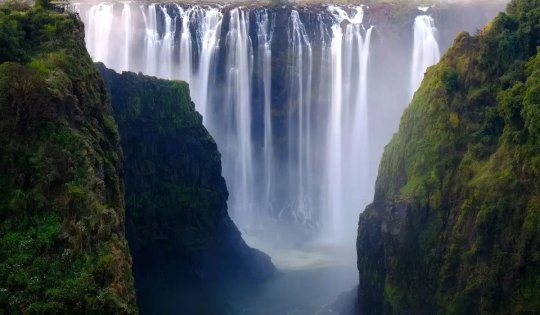
#Best Places To Visit In Meghalaya#best places to visit in Shillong#Meghalaya famous places#The best place to visit in Meghalaya#10 best places to visit in Meghalaya#best places in Meghalaya#Meghalaya best places to visit#places to visit in Meghalaya in december#best tourist places in Meghalaya#beautiful places in meghalaya#best month to visit Shillong#best places to visit Meghalaya#must visit places in Meghalaya#famous tourist places in Meghalaya#famous tourist places of Meghalaya#must visit places in Shillong#best places to visit in Shillong and cherrapunji#best places to visit in Assam and Meghalaya#top tourist places in meghalaya#places to visit in meghalaya in October
0 notes
Text
Meghalaya

0 notes
Text
Meghalaya Tourism: An Ideal Travel Guide

Meghalaya, meaning "the abode of clouds", is a paradise for nature lovers. This hill station in Northeast India has captivated travelers worldwide with its truly magnificent and enchanting skies. Nestled in the Himalayas, Meghalaya shares its borders with Bangladesh to the east and south and Assam to the north.
Unforgettable Experiences Await
Meghalaya boasts a plethora of tourist attractions, from towering hills and valleys to countless lakes, cascading waterfalls, pitch-black caves, and sacred forests. Panoramic views, misty hills, terraced slopes, flowing waterfalls, and serpentine rivers are sure to enthrall your soul.
Meghalaya will awaken all your senses. From cultural highlights to heart-pounding adventures, numerous unforgettable encounters await the curious traveler.
Cultural Tapestry
Meghalaya's cultural tapestry is woven with numerous threads. The vibrant traditional festivals are a fantastic way to experience the uniqueness of the state's indigenous population. Soak in the customs of the locals and the breathtaking views while learning about the message each festival conveys. Explore some of the state's local history while sampling the various cuisines it has to offer. Get lost in the area's markets and take advantage of the burgeoning nightlife scene. Meghalaya is renowned for its contemporary cultural celebrations that honor local and international artistic talent. Expect a showcase of music, art, intriguing cultural customs, and more.
Top Tourist Destinations
Popular tourist spots in Meghalaya include Shillong, Tura, Jowai, Cherrapunjee, Nongpoh, and Baghmara. There are numerous tourist attractions in Meghalaya that are worth a visit, including:
Shillong (Scotland of the East): Explore Shillong Peak, Elephant Falls, Ward's Lake, Don Bosco Museum, and Umiam Lake.
Cherrapunjee (One of the wettest places on Earth): Witness the awe-inspiring Dain-Thlen, Kynrem, Nohkalikai waterfalls, and the marvel of engineering - Double Decker Living Root Bridge. Explore Mawsmai Cave, Seven Sister Falls, and Wei Sawdong Falls.
Mawsynram (Another contender for the wettest place on Earth): Visit the famed Jakrem Hot Spring and the Mawjymbuin Cave.
Mawlynnong (Asia's Cleanest Village): Experience serenity amidst spotless surroundings and explore the Living Root Bridge and Balancing Rock.
Dawki (Crystal-clear Dawki River): Enjoy kayaking, snorkeling, and camping by the river in Shnongpdeng Village. Take in the scenic beauty of the Dawki River and the Indo-Bangladesh Border.
Best Time to Visit:
March to June: Pleasant weather, ideal for sightseeing and adventure activities.
July to September: Perfect for relaxation and enjoying the beauty of the rainy season.
October to November: Witness the vibrant cherry blossoms in autumn.
December to February: Ideal for hiking excursions and exploring nearby locations.
How to Reach Meghalaya:
By Train: The nearest train station is Guwahati (Assam), 180 kilometers away. Taxis or buses can take you to Meghalaya from Guwahati.
By Air: Lokpriya Gopinath Bordoloi International Airport in Guwahati (Assam) is the nearest major airport. Taxis can take you to Meghalaya from the airport.
By Road: Major cities are well-connected to Meghalaya by roadways.
Travel Tips:
Research local permits required for specific activities.
Book your accommodations in advance, especially during peak season.
Pack essentials like rain gear and comfortable shoes.
Plan your itinerary based on your interests and time constraints.
Budget for your trip, including transportation, accommodation, food, and activities.
Sample the local cuisine - a delightful way to experience the culture.
Respect local customs and traditions.
Rainfall in Meghalaya:
Meghalaya receives an average annual rainfall of 1,150 millimeters. The state lives up to its name, with the sky rarely remaining cloud-free.
Weather in Meghalaya:
Meghalaya boasts pleasant weather year-round with an average temperature of 24°C. The monsoon season brings ample rainfall, enhancing the beauty of the natural landscape. Winters are dry with moderate temperatures.
Ready to Explore?
Meghalaya, with its stunning beauty, rich culture, and diverse experiences, is a destination that will leave you mesmerized. Let Kajaawa Tours & Cabs craft your dream Meghalaya adventure and help you discover the hidden gems of this incredible state!
2 notes
·
View notes
Text
Northeast India-Seven Sisters State of India✨
Seven States in the eastern most part of India
The Northeast corner of India is calling all adventure seekers and nature lovers! Often referred to as the Seven Sisters, these eight states (Arunachal Pradesh snuck in!) boast breathtaking landscapes, vibrant cultures, and some of the friendliest people you'll ever meet. Let's explore a glimpse of what each has to offer:
1. Arunachal Pradesh: The Land of Dawn-Lit Mountains
Imagine snow-capped peaks piercing the clouds, emerald valleys cradling serene monasteries, and rushing rivers carving their way through the Himalayas.
2. Assam: Gateway to the Seven Sisters & Land of One-Horned Rhinos
Assam is the heart of the Northeast, with vast tea plantations blanketing rolling hills. Spot the elusive one-horned rhino in Kaziranga National Park, or cruise down the mighty Brahmaputra River.
3. Nagaland: Where Warriors Dance & Hornbill Festivals Dazzle
Immerse yourself in the rich tribal heritage of Nagaland. Witness the vibrant Hornbill Festival, a celebration of music, dance, and indigenous crafts.
4. Manipur: The Land of Exquisite Dance & Serene Lakes
Manipur is a cultural haven, famous for its graceful Manipuri dance form. Take a boat ride on Loktak Lake, the largest freshwater lake in Northeast India, dotted with unique floating islands made of phumdis (heterogeneous masses of vegetation).
5. Meghalaya: Abode of Clouds & The Wettest Place on Earth ️
Meghalaya lives up to its name, with dramatic waterfalls cascading down lush hills and misty clouds clinging to the peaks. Sohra (Cherrapunjee) holds the record for the highest annual rainfall, making it a haven for trekkers seeking a truly mystical experience.
6. Mizoram: The Sing-Song State & Land of a Hundred Hills
Mizoram's rolling green hills and friendly locals who love to sing will leave you enchanted. Explore hidden waterfalls, trek through bamboo forests, or simply relax and soak in the serenity.
7. Sikkim: Where Himalayas Meet Serenity ️
Sikkim is a trekker's paradise. Hike through the Himalayas, marvel at the beauty of snow-capped Kanchenjunga, or visit serene monasteries nestled amidst the mountains.
8. Tripura: Unexplored Gem & Land of Tripurasundari Temple
Tripura is an off-the-beaten-path destination with a rich history and vibrant culture. Visit the magnificent Tripurasundari Temple, one of the holiest Hindu pilgrimage sites, or explore the untouched beauty of its hills and forests.
2 notes
·
View notes
Text
Travel Sketches (Nov 2023 - March 2024)
Nov 2023.
Bishnumaya just turned 100 this October. She comes from Pokhari, about 15 kilometers from Mirik town. As we spoke, she recalled old memories, her expressions shifting as if reliving those moments. She seemed elsewhere, gazing past me into the distance, and then, as if continuing a conversation with herself, she said, “Nowadays people ask about caste when they meet someone, and how is that of any use?”
She described how, when she was small, there were no proper schools in her village. She learned to read and write, however little, by arranging corn kernels on the ground to form shapes that resembled letters and numbers. Reflecting on her long life, she added that everyone around her—friends her age and younger siblings—is dead, and she feels like a monster who swallowed them all.

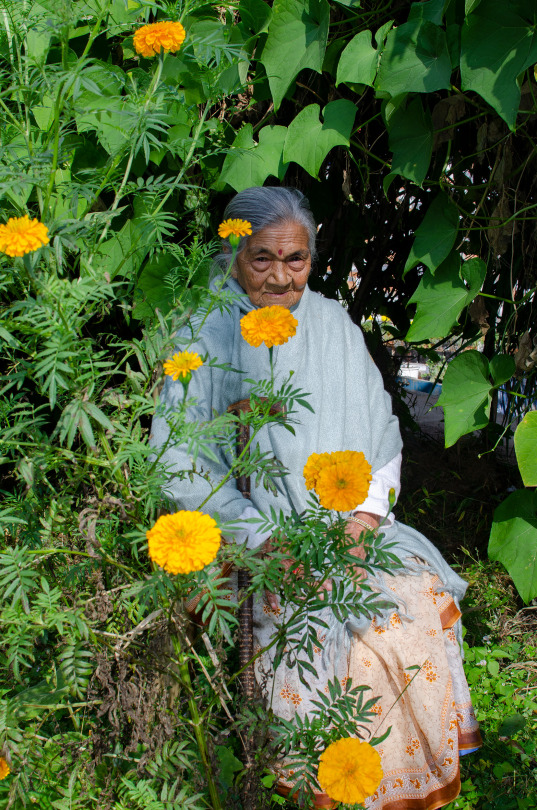

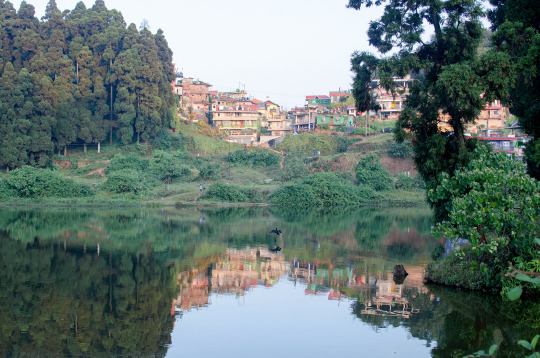
The sun is out, but it’s only warm where the light falls. The history of Mirik is reflected in its lake, which used to be a marshland. According to Wikipedia, the name Mirik comes from the Lepcha words Mir-Yok, meaning "place burnt by fire." It's very green now for a place that was once burnt.
A town fair is underway, offering a range of attractions: a Ferris wheel, flower park visits, fast food stalls, ice cream carts, horse and boat rides, live pop music, card game betting, balloon shooting, local bingo-type card games, and hoopla with prizes up for grabs. Some prizes are cash with notes of 20, 50, and 100 rupees.
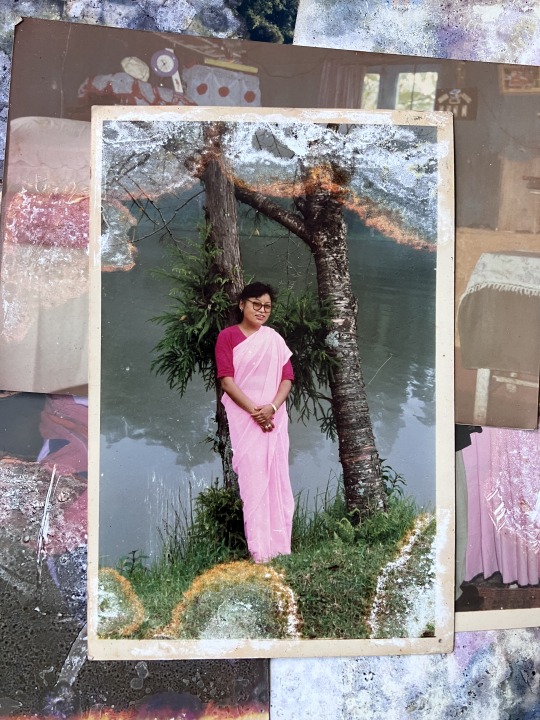
——
For the past ten years, I haven't had a permanent home. When I wanted to sidestep the weight of planning and longed for comfort and familiarity, I returned to places I liked a little more than others: Auroville, Dharamshala, Shillong, Aizawl, Nagaland.
I like meeting new people and have formed what feels like extended families in some of these places. Since I have mostly felt free to move around, sometimes nostalgia of people or a time or a curiosity to see how things may have changed would draw me back to a place.
Earlier in August, while I was temporarily living in Auroville, I got a call about a six-month project called The Great Himalayan Exploration, a collaboration between UNESCO and Royal Enfield. The project aims to document the intangible cultural heritage of local communities in the Himalayan region of Northeast India.
My work on this trip specifically involved photographing the people behind various cultural practices and examining the ecosystems they exist in. To build context, I engaged in various methods, such as scanning old photos from people’s personal albums, taking photos of their living spaces, landscapes, and exploring archival resources. From November to April, we were in West Bengal, Sikkim, Tripura, Mizoram, Assam, Nagaland, and Meghalaya.
------
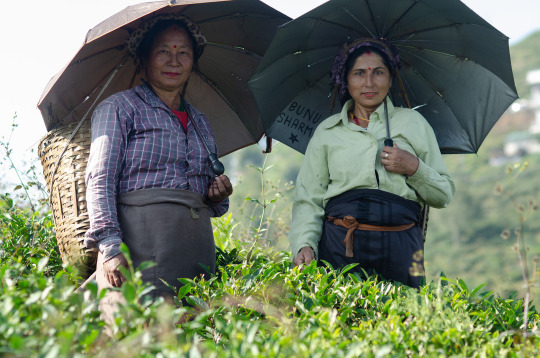
On our way back to Siliguri from Mirik, we made a lengthy stop near a tea estate. Lalita, from Tingling village, shared that she had spent two decades working on the estate, much like many other women from the village. Their collective hope was to earn a minimum of 500 rupees per day for their labor. Currently, they are receiving 250 rupees per day for an eight-hour shift.
------
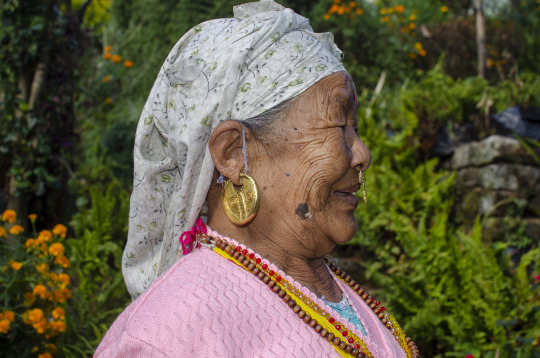
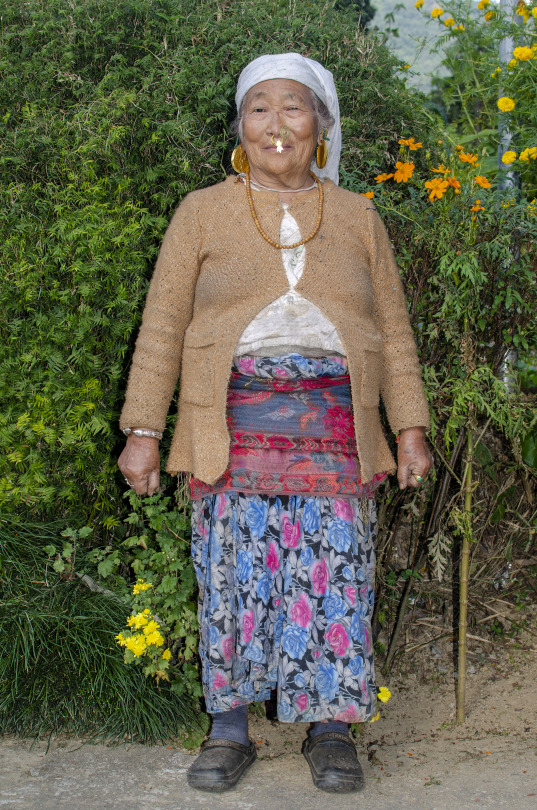
Sanchamaya, 74, sits with her friend Bodhimaya in the front yard of her house in Darap, both lifelong farmers of the area and belonging to the Limbu community. They're nice and welcoming. It's our second day in Pelling, West Sikkim, and I've ended up at the wrong house. Today, we're supposed to see a drum dance(chyabrung) performance by local Limbu boys, which I'll catch later.
They talk in basic broken Hindi, with Shusan translating most of it. Sanchamaya leads me to the back of their house, where she proudly shows me trays of dried large cardamoms. Later, we'll visit her cardamom field. They also cultivate Mosambi, oranges, guavas, maize, peas, ginger, and onions. Sanchamaya spends her days with her friend, grandchildren, working in the fields, and cooking in the kitchen.
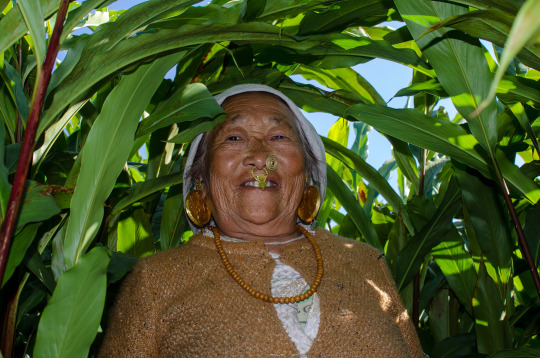

------
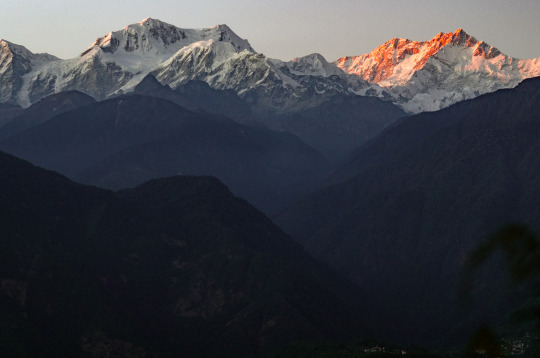
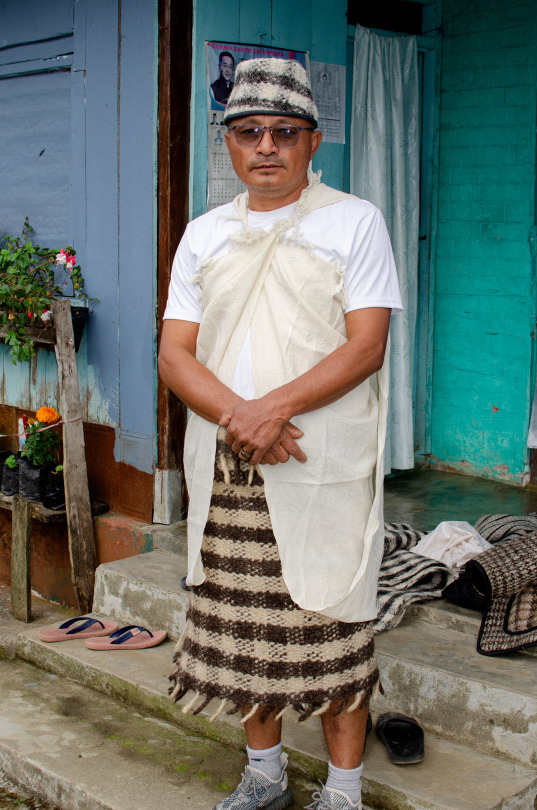
I visited Chuba village, 3 hours away from Gangtok, with Semeon from Haflong, Assam, a textile design graduate from NID and working at Sonam’s design studio called EchoStream based in Gangtok. Semeon was familiar with the village and the community I was there to meet. Arun Gurung and his wife, founders of Chubako, are endeavoring to revive an old tradition of sourcing wool from indigenous banpala sheep to make clothes. They operate a small cooperative called Chubako. In this village of 43 families, one person from each household now works for Chubako. (photo above: Arun Gurung, founder of Chubako)
(photo below: Designed by Sanskruti Shukla, co-created with the craft community of Chubako for Echostream, Gangtok)
Local stories of the craftspeople of Chuba are showcased and incorporated into wool through interactive workshops focused on storytelling and design development. The felted art rugs depict the flora and fauna of Sikkim.
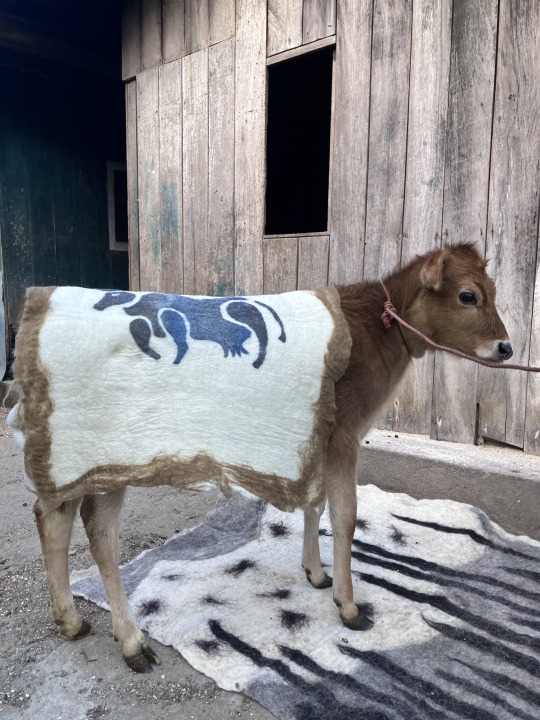


Gangamaya Gurung, 83, Arun Gurung's mother, lit up like a child when she saw Semeon. They shared a bond akin to best friends. Despite her age, Gangamaya remains active, tending to sheep, cutting grass, farming, and weaving. When asked about her leisure activties, she said, "eat, watch TV - eat, watch TV."
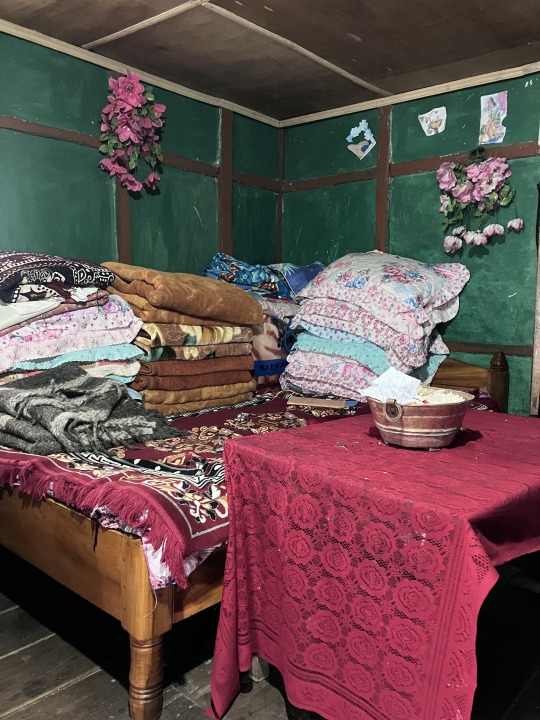
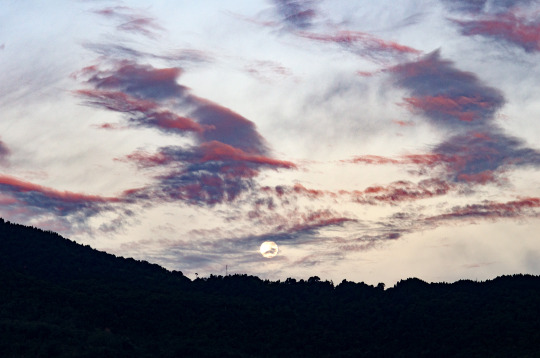

Sampati Debbarma, a farmer, returning from work in Takarjala, Tripura.
--------
Jan, 2024.
We have been out on this trip for 3 months. My thoughts scattered in a kind of bardo between the world I know and the world I am coming into contact with. I picture house fronts with flowers in Darjeeling, roads winding, the long cold rivers snaking toward mountains that seem no bigger than my thumb, the snow capped peaks shifting colours, the prayer flags in high altitudes and on house doors. Gangtok’s Lal Bazaar skateboarders flash by, a school in Tripura where a student lives on 700rs a month, nini bung tamo and 4 other sentences I learned in Kokborok nag me like a tune. Sidangcherra to Pecharthal to Panisagar to Damchara checkpoint we make our way from Tripura into Mizoram by road. I think about where I will be later in the summer and see a white fluffed cloud taking the shape of a growing tree far on the horizon.
——

Krismas Ruaitheh(Christmas feast) at Khatla Presbyterian Church, Aizawl. This is my 3rd time in Aizawl. I used to go for dinners, sometime evening tea to my friend’s family house further up the road from the Khatla church. We are here to document the traditional community feast of the Mizos.

Priscilla is currently pursuing her BA in Political Science in Delhi, and she's home for the holidays. She was volunteering at Khatla Presbyterian Church where she and her friends were tasked with serving lemonade, a customary drink after the meal. For Priscilla, the most remarkable aspect of the feast is its longstanding tradition — dating back to pre-Christian times — where the entire community comes together to share its moments of joy and sorrow + they still use Changel Hnah (plantain leaves) — the traditional way to serve meals.
-----
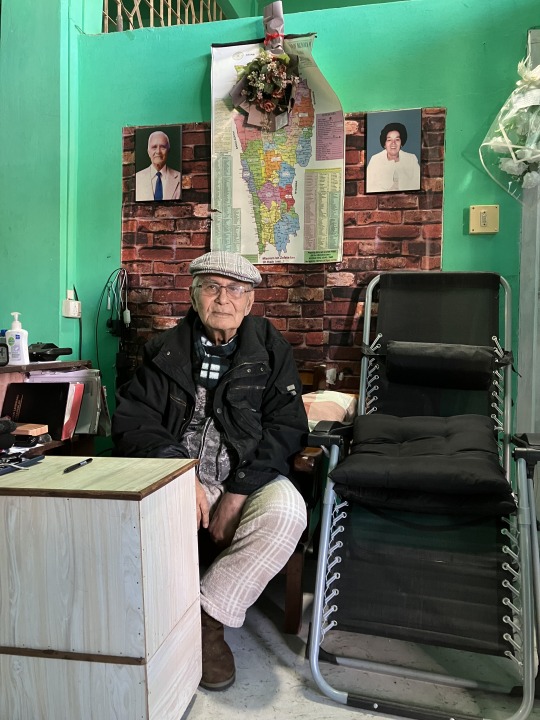
On an idle walk one evening in Khatla, I find myself in a local thrift store and get invited to meet James Lalhmingliana. He is 80, one of the founding members of Aizawl's first bike club, Aizawl Thunders. He went to school at Sts. Edmund’s in Shillong.
In 1966, he joined the Mizo National Front uprising, fighting for freedom. He went underground for seven years, first in Arakan, Burma, then in 1969 to East Pakistan for shelter. "It was useless," he says. "We wasted our good years. When I came back, I was put in jail, but not for long."
He has been housebound for years due to his health.
———


At 8 am on a cold January morning, we arrive at Joonbeel Mela. (Joon and beel are Assamese terms for moon and wetland. The Tiwa community first organized this in the 15th century to exchange goods between indigenous tribal communities in Assam and the surrounding areas.)
It is known as the only fair in India where people still practice barter, exchanging goods like fish, sweet potatoes, yam, homegrown vegetables, turmeric, chili, kali miri, and rongalau.
Over a few hours, I have brief interactions with people from Jagiroad, Pamlatar, Deosal, Sira, Changsari, Potia Pathar, Bengenabari, Palahguri, ulukunchi, morigaon, Nagaon, Saru Amli, Belguri, Damal, and places as far as Langpih, mawlynnong in Meghalaya. No one refuses a photo.
—

This is my fifth time in Nagaland. I first came here ten years ago and stayed at Kevesho's home. He is the father of the Tetseo Sisters, a well-known folk group of four sisters from Nagaland.
Kevesho Tetseo, son of Nülhüprü Tetseo was born in 1950s in Thüvopisümi village, Phek District, Nagaland. Initially schooled in the village, he finished his HSLC at Government High School in Kohima and graduated from Kohima College in Arts. He worked in the Education Dept. for sometime and now retired. Active in cultural music, Chokri language preservation, and in church choir since his youth.
(Tati - - a single string musical instrument which is used as an accompaniment with singing of li- indigenous songs by the Chakhesang Nagas.)
Kevesho learned how to make Tati from observing elders in his village when he was young and has done Tati making work since 1990s and a good number of it has been produced till date by him including improvising it for longer life by using steel wires as strings.
He tells me, the woven shawl he is wearing in the picture is "thipiqhü". It is the most prestigious shawl (indigenous cloth) among many traditional clothes of the Chakhesang tribe. It is a shawl they wear with humility and honour.
“Nagaland is my home and I love my culture, its rich traditional heritage, and the natural beauty.”
-----

Daisy Yaden was born in Zotlang, Mizoram. She studied at the Welsh Mission School in Mission Veng, Aizawl. She will turn 98 this June. She learned to weave shawls on a backstrap loom, stitching, and baking from her mother, often baking cakes in the fireplace. She taught in the interiors of Nagaland, in places like Noklak and Changtongya. She started her career by teaching people self-sufficiency—how to cook, make jams and pickles—skills she picked up from a British magazine called Woman’s Own. She used to compose little tunes for children at Sunday school. She loves flower gardening and her favourite film is "Gone with the Wind."
Photographed at her house in Duncan, Dimapur.
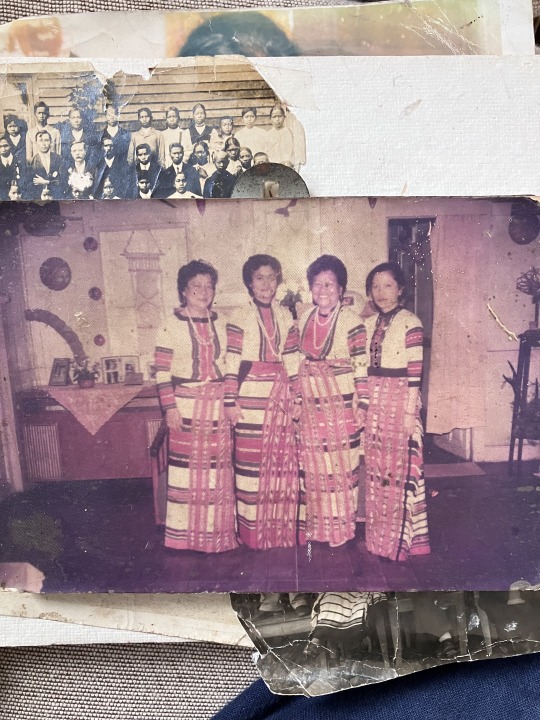
I am sitting with Marian, Daisy's daughter, at her house in Duncan. Marian, now 75, lived in Bombay from 1970 to 2012. She went to college there and worked as an air hostess with Air India for 34 years. In 2012, she returned to Nagaland. We agreed to meet again for lunch and look at her old photo albums.
(below: Marian,16, in Kohima trying a sari for the first time / in Santa Cruz, Bombay in the 80s with James Ferreira and friends)



——-
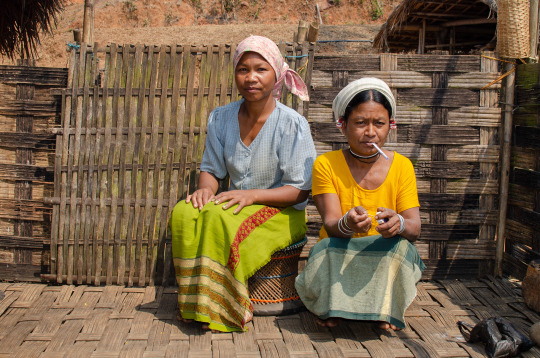
Khinchi is Christian, and Sindri is Songsarek, belonging to one of the last animism practising communities. I learned a few words in Achik: Khading bo, Methela, Namja, and Manja. Here I am in the extended kitchen space at Sindri's hut, in Sadolpara, Dadenggre, where they are taking a break from cooking lunch.
-----
First published in Hindustan Times June '24
0 notes
Video
youtube
Shillong to Cherrapunji via Dawki | Best Road Trip In Meghalaya | Cherrapunji Tourist Places(2022)
The best road trip in meghakaya is shillong to Cherrapunji by road via jowai and dawki. First u need to travel to jowai from shillong and on the way u can visit lalong village and then phe phe waterfalls. Dont forget to visit the famous krangsuri waterfalls. On the way you will get to see beautiful meadows and numerous seasonal waterfalls. Then take the route to dawki from jowai and you will be blessed with utmost beauty. There are vast lands of meadows, green fields ,waterfalls and panoramic views of some canyons. Stay beside umngot river in snopdeng. A beautiful place with a great opportunity to do river camping. Umngot river is the cleanest river of India. Then travel to mawlynong which is the cleanest village of India. Mawlynong has a beautiful park and a living root bridge which must be visited. At last I arrived at cherrapunji and on the way got some excellent views.
#youtube#best road trip in meghalaya#Cherrapunji Tourist Places#travel places#tour places#best places to visit
0 notes
Note
top five places you'd love to visit
omg i love all of these asks smmmm tack!!!
ok so
numero uno is sweden😌😭 for ykn obvious reasons and other scandinavian countries
and then we have well the places of north-east india i havent been to yet bc i really fucking loved meghalaya
idk why but ive never been to kanyakumari for some reason so yeah down south for sure
i also wanna visit nyc
OOH AND rome and greece for sure like !!!!! the parthenon and colosseum and all that shit
💜
#ok so ik i went like larger areas like cities and countires#but thats mainly bc i cant rlly think of anything rn so yeah#asks.#ask game#rosetintedgreyspaces
2 notes
·
View notes
Text
Wari Chora: The Hidden Gem of Meghalaya
Meghalaya, meaning "the abode of clouds," is known for its verdant landscapes, cascading waterfalls, sacred forests, and majestic hills. Among its many lesser-explored destinations, Wari chora meghalaya is an emerging marvel, nestled within the pristine surroundings of the West Khasi Hills. This secluded destination is gaining attention from adventurers and nature lovers who seek solace in Meghalaya's offbeat paths.
In this blog, we'll take you on a virtual journey to Wari Chora, exploring its significance, location, natural beauty, and why it’s a must-visit spot for those looking to experience the unexplored terrains of Meghalaya.

The Hidden Paradise: Wari Chora
Wari Chora is often referred to as a hidden paradise in Meghalaya. Unlike the more popular tourist destinations like Shillong, Cherrapunjee, or Dawki, Wari Chora is still relatively unknown to mainstream travelers. This seclusion makes it one of Meghalaya's best-kept secrets, offering a pristine and untouched experience for visitors.
Meaning and Significance
The name "Wari Chora" comes from the Khasi language, one of the primary languages spoken in Meghalaya. "Wari" means to enter or flow, and "Chora" is often associated with a hidden or remote place. Together, Wari Chora can be interpreted as a hidden flow, symbolizing its off-the-beaten-path location and the natural streams and waterfalls that characterize this landscape.
Locals believe that Wari Chora is blessed with an ethereal beauty, one that reflects the spiritual connection the indigenous people share with nature. The Khasi people have always revered their surroundings, and Wari Chora remains one of the purest representations of the Khasi beliefs in environmental harmony and the sanctity of untouched wilderness.
Getting to Wari Chora
Location
Wari Chora is located in the West Khasi Hills district of Meghalaya, which is about 80 kilometers from Shillong, the capital of the state. The West Khasi Hills are known for their undulating landscapes, peppered with waterfalls, caves, and picturesque valleys. Wari Chora is nestled deep within these hills, providing an escape from the bustling tourist hotspots.
To get to Wari Chora, travelers often embark on a scenic road trip from Shillong. The drive takes you through winding mountain roads, flanked by thick forests, rolling hills, and views of plunging valleys. The area remains unspoiled, with minimal human interference, making it an ideal retreat for nature enthusiasts.
The Trek to Wari Chora
One of the most exciting aspects of visiting Wari Chora is the trek to the site. The journey typically begins from the nearest village, Rangthong, which is about 10 kilometers from the destination. The trek is moderate in difficulty, with a combination of forested trails, open meadows, and rocky terrain.
As you trek towards Wari Chora, you’ll be accompanied by the sound of birds, rustling leaves, and the gentle trickle of streams that crisscross the path. The trek offers ample opportunities for nature photography, and you’ll likely come across rare flora and fauna native to the region.
The trail eventually opens up to a breathtaking view of Wari Chora’s signature waterfall and a wide valley that stretches into the horizon. The sense of tranquility and peace here is unparalleled, and the experience is worth every step.
Natural Beauty and Attractions
The Waterfall at Wari Chora
The centerpiece of Wari Chora is its majestic waterfall. The water cascades down a series of rocky cliffs into a serene pool below, creating an almost surreal scene. Surrounded by thick vegetation and towering cliffs, the waterfall is a perfect spot to relax, take in the beauty of nature, and dip your feet into the cool, refreshing waters.
During the monsoon season, the waterfall is at its most powerful, and the entire valley comes alive with lush greenery, fresh blooms, and a sense of renewal. However, Wari Chora is equally stunning during the winter months when the skies are clear, and the cool breeze adds to the serenity of the location.
Wari Chora Valley
Beyond the waterfall, the Wari Chora Valley stretches into a wide-open expanse surrounded by hills. This valley is dotted with streams and small pools, making it a perfect spot for picnics or simply spending time in nature. It’s a relatively undisturbed area, providing visitors with a chance to experience Meghalaya’s beauty in its purest form.
The valley is also ideal for birdwatching. Meghalaya is home to a wide range of bird species, and Wari Chora is no exception. Visitors often report sightings of hornbills, sunbirds, and other avian species native to the region.
Flora and Fauna
Wari Chora is an ecological haven. The area around it is teeming with biodiversity, featuring a mix of evergreen forests, grasslands, and small meadows. The flora includes a range of ferns, orchids, and medicinal plants that are native to Meghalaya. During the monsoon, the entire landscape turns into a vibrant green, with flowers dotting the hillsides and valleys.
The fauna of Wari Chora is equally impressive. The region is home to several mammals, reptiles, and insects. Travelers might even spot wild boars, civets, and a variety of frogs and lizards during their trek. Conservation efforts are in place to maintain the pristine environment, and visitors are encouraged to respect the local ecosystem during their journey.
Why Visit Wari Chora?
Off-the-Beaten-Path Experience
One of the main reasons to visit Wari Chora is its offbeat charm. For those who are tired of crowded tourist destinations and want to experience something unique, Wari Chora offers the perfect retreat. The destination remains relatively unknown to mainstream travelers, which means you can enjoy the natural beauty without the usual crowds.
A Haven for Adventure Enthusiasts
Wari Chora is an ideal destination for those who love trekking, camping, and exploring the wilderness. The trail leading to Wari Chora offers a good mix of adventure and nature, making it suitable for both beginners and seasoned trekkers.
Camping is another popular activity at Wari Chora. The valley provides a picturesque campsite, where you can spend the night under the stars, surrounded by the sounds of nature. It’s an excellent way to disconnect from the chaos of daily life and reconnect with the natural world.
Photography Opportunities
For photography enthusiasts, Wari Chora is a visual treat. The landscape, with its waterfalls, lush green valleys, and dramatic skies, offers endless opportunities for capturing stunning images. Whether you’re into landscape photography, wildlife photography, or simply capturing the essence of a place, Wari Chora will leave you with a treasure trove of memories.
Things to Keep in Mind
Respect for Nature
As with all eco-tourism destinations, it’s essential to respect the environment at Wari Chora. Visitors should avoid littering, refrain from disturbing the local wildlife, and ensure that their visit has minimal environmental impact. The beauty of Wari Chora lies in its pristine condition, and it’s crucial to keep it that way for future generations.
Plan Your Visit
Wari Chora is a remote destination, so it’s essential to plan your visit carefully. Make sure to carry all necessary supplies, including water, snacks, and basic first-aid. While there are local guides available, the area is still developing in terms of tourism infrastructure, so it’s always good to be prepared.
The best time to visit Wari Chora is during the post-monsoon season (September to November) when the waterfalls are in full flow, and the weather is pleasant for trekking.
Local Culture
Meghalaya is home to a rich and vibrant culture, with the Khasi people being one of the main ethnic groups in the region. When visiting Wari Chora, take the time to interact with the local villagers and learn about their customs, traditions, and way of life. The warmth and hospitality of the Khasi people add another dimension to the experience of visiting Wari Chora.
Conclusion
Wari Chora is a hidden gem waiting to be discovered. Its breathtaking natural beauty, sense of seclusion, and opportunities for adventure make it a must-visit destination for anyone traveling to Meghalaya. Whether you're seeking peace and solitude, looking for a unique trekking experience, or simply wishing to explore Meghalaya’s offbeat destinations, Wari Chora is a destination that will leave you spellbound.
So, the next time you plan a trip to Meghalaya, make sure to add Wari Chora to your itinerary. This hidden paradise promises an experience that is both rejuvenating and unforgettable, a perfect reflection of the natural wonders that Meghalaya has to offer.
0 notes